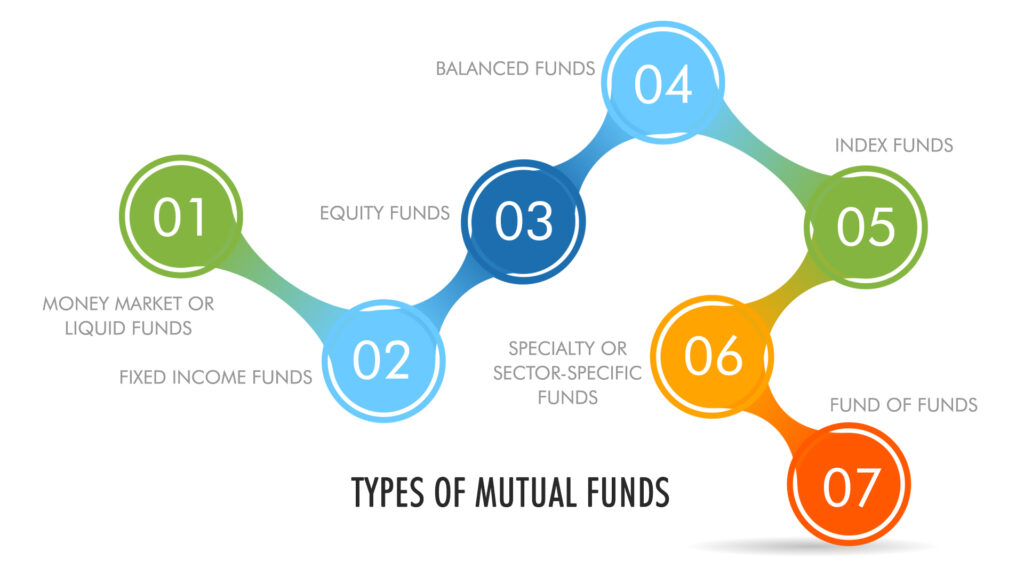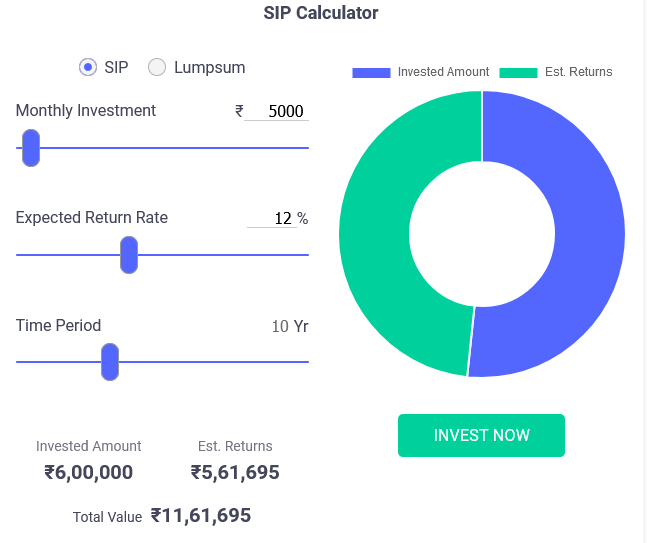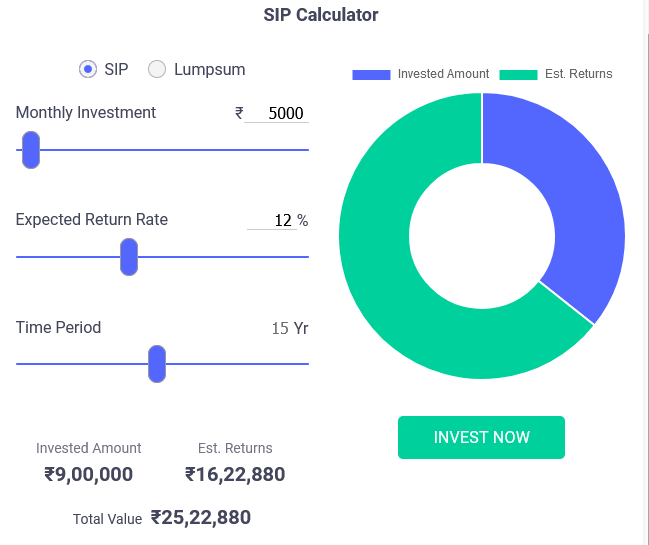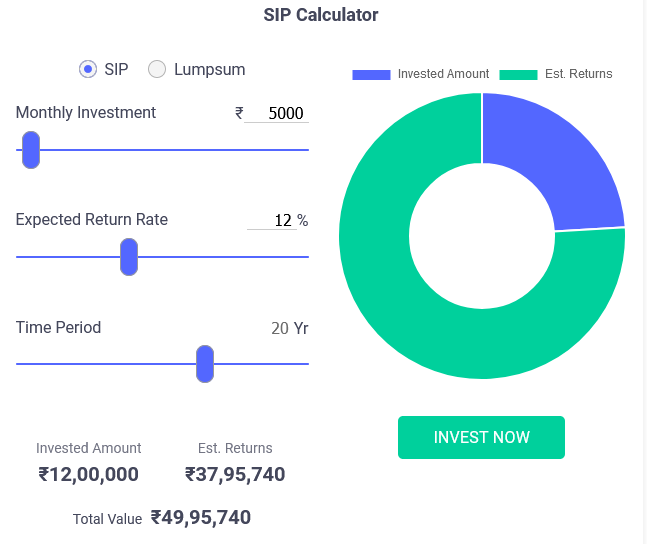Hello guys, here we are with something new and valuable for you. As the title says it all. Nowadays you must have seen a huge hike in advertisements for mutual funds. Whether it’s television, YouTube, display advertisements, or any other platform.
Have you ever thought about why is it so? It is clearly said in the advertisements that mutual funds are risky. Still, they are promoting it. Why so? Not to worry, we will clear it all for you. So let’s learn from the start.
What is mutual fund meaning and what are they?
A mutual fund is an Investment scheme managed by Asset Management Companies. Companies collect money from a group of people and invest their money in stocks, bonds, and other securities.
Each company has its own fund managers who take care of the funds. They are the ones who decide where to invest the money which has been collected from a group of people who are called Investors.
As an investor, when you invest in a mutual fund, you buy “units” in that fund. Units represent the share of your holding in that particular fund. These units are purchased and sold at the fund’s current net asset value (NAV).
For your better understanding, let me explain to you with an example:
Let’s assume I have an asset management company and I run a mutual fund named XYZ and the NAV for this fund is 100 INR. If the investor wants to invest 2500 INR into my fund.
So, how many units will the investor accumulate? The answer to this is 25. Did you get it how? Let me help you with that. You invested 2500 in a fund that cost 100 per unit.
So that makes it 2500/100 = 25.
Adding more to this, all the mutual funds are registered under SEBI. A regulatory body that monitors and regulates the Indian capital and securities market.
What is Net Asset Value (NAV)?
Basically, NAV is the price of 1 unit of a mutual fund. It is quite similar to the price of a share. As you must be aware, every share has different pricing which keeps on fluctuating on daily basis. The same goes with NAV.
NAV is calculated at the end of each market day. So I hope you are clear till now. Now another big question that comes to our mind is, in which mutual fund should we invest?
There are plenty of mutual funds available in different categories which makes it difficult to decide which one to choose. Still, you need not worry. We will discuss this later in the post. First, let us discuss some of the types of mutual funds.
What are the types of Mutual Funds?

Basically, there are 5 categories of mutual funds which have different types of funds under each category. So let’s begin and explain to you about each of them:
1. Equity Funds
These funds invest in company shares and their performance is purely dependent on the stock market. You should be cautious while investing in these funds as they are considered to be risky. But, you can also expect high returns from these funds if you have a long-term horizon.
Some of the types under these funds are Large-cap Funds, Small-cap Funds, Mid-cap Funds, and many more.
2. Debt Funds
These funds invest money in government securities, bonds, and treasury bills. You can expect stability and minimum risk with decent returns in these funds.
3. Hybrid Funds
These funds are basically used to balance out debt and equity. Hybrid funds invest in both debt and equity which reduces some of your risks.
4. Solution-Oriented Funds
These funds are focused on your goals like children’s marriage or education, for your own retirement, purchasing a house, or could be any goal that you want to achieve at some point in time.
5. Other Funds
Index funds are the most popular type of fund under this category. Index funds invest in the index of the stock market. So their performance doesn’t rely on any specific stock. Instead, it depends on how the index performs.
These were some of the categories of mutual funds. Now, that you have learned about mutual funds and types of mutual funds. I am sure, you must be thinking about how to invest in it. Aren’t you?
Don’t worry. We will not leave you in a mid-way. I am here to explain each and everything in an as simple way as I can. So, let’s move ahead with that.
How to invest in Mutual Funds?

Majorly, there are two ways to invest in mutual funds.
- Lumpsum
- SIP
Now, what are they? They are 2 types through which you can invest in mutual funds. Let me take you through each of them.
What is Lumpsum?
Lumpsum is investing the whole or entire amount in one go. Suppose, you have 10 Lacs with you and you want to invest the whole amount in one go. This type of investment is called lumpsum investment.
What is SIP in mutual funds?
You must have heard a lot about SIP. Everyone is favoring this form of investment. Have you ever thought, Why? Because it could help you to generate wealth for yourself. Wealth beyond your expectation and imaginations.
How? This could be your other question. Then, I would say with the help of compounding.
COmpound Interest is the eighth wonder of the world
Albert Einstein
Yup, you read it right. I am talking about the same wonder. Don’t worry, I will show you the power of compounding. But, before that let me get back to SIP.
So, SIP investments are done in installments. Let’s say you are earning 50K a month and you want to invest 10K a month in SIP. Then, you will be investing 10K on monthly basis and this form of investment is called SIP (Systematic Investment Plan).
You can say, it’s just like we open an RD (Recurring Deposit) in a bank. But there are many differences between both of them. We will talk about that in some other article. Let’s not divert our focus. Right?
Benefits of SIP
This is the point which you should not miss at all. You must be thinking about why SIP is in so much hype. There is an option of lumpsum also and compounding is also calculated on that too. Then why SIP?
Because SIP helps in reducing your risk with the help of rupee cost averaging. And this is the primary benefit of SIP. No doubt, this can be done in lumpsum too by implementing some of the strategies.
But, you don’t need any strategy in SIP. Simply keep on investing a fixed amount of money on monthly basis. Rest, leave it to average costing and compounding power.
Learn about Rupee Cost Averaging
This will make you understand how it works and why it is better from lumpsum.
So how it is going till now? Learned something new and interesting? If yes, help your friends and relatives also to learn this by sharing the article.
If not, I am waiting to see your question in the comments section below.
So now when you are clear till here and have no further queries. Let’s move ahead and we should not forget that we haven’t completed the power of compounding yet.
So let us show you the power now.
What is the power of Compounding?
There is no such rocket science in it. It’s really easy to learn how it works.
Let me explain to you with an example. I always prefer examples to explain anything as this is the best way to deliver something.
Let’s assume Rahul has invested 1 Lac at 5% for 10 years at simple interest.
What will eventually happen in this case, Rahul will earn 5K as interest on a yearly basis. So, after a year his 1 Lac will be 1.05 Lac. But, as he invested at simple interest, only his principal amount will be re-invested for the rest of 9 years.
This is not the case in compound interest. In compounding, the principal amount with its interest is invested again. And trust me this makes a huge difference and this is the actual power of compounding.
Let’s take a look at the figures
Are you gaining some interest out of it? You must be bored with this quite long article. Is it? But trust me this is worth it. You will learn a lot from it as I learned in my starting days. Don’t worry, now I will be showing you the figures. Enough of the theory part now.
Check out the images below and see the power of compounding.



Did you notice something? Isn’t it beyond your expectations? As you are increasing the time duration the returns are getting multiplied.
Just visit this SIP calculator and enter the amount which you can invest on monthly basis. Don’t change the interest rate, let it be at 12%. As this is the achievable rate for long-term investments in equity funds.
But still, you want to see what could be your actual amount if the returns are higher than 12%. Go ahead and see the numbers. Trust me, you will be in a dilemma is it really possible?
After mentioning the expected rate, enter your time horizon. Now, I would ask are you really serious about investing in mutual funds?
If, yes is the answer. I would always recommend you to invest for the long-term. Because you could get better returns on the long-term horizon and you will also reduce the risk of losing your money.
Best platform to buy Mutual Funds?
Understood everything. Now what? Is this what your mind is thinking about? It’s time to take action now. For that, you will require a platform through which you start investing in mutual funds.
Although, there are plenty of discount brokers and full-service brokers available in India. But I would personally recommend opting for a discount broker if you are investing only in mutual funds.
If you are into trading and stock investments, you can opt for full-service brokers also. But again, that’s altogether a different topic which we will cover in another article.
I am currently using Zerodha and Sharekhan for my stock trading and investment. But I would recommend going for the Groww app if you are dedicated to mutual fund investment.
It has a clear user interface that will help you to learn about all the options very easily. The best part is the support team is really great. You won’t face any issues and if you do. They are always there.
Create and activate the account to get 100 INR.
Best mutual fund to invest in?
To be true, I am not the right person to answer this question. Still, as I said I won’t leave you in a mid-way. So I will be covering this in another article. There are many aspects that need to be taken care of.
Still, I won’t recommend any funds from my end. Rather, I would request you to consult your financial advisor for this or start learning.
See, I never took any advice from anyone. The reason was I was focused on learning. I kept on learning and took action accordingly.
You need not worry. I will guide you, on what factors need to be taken care of and then you can move ahead with your understanding and decision. Till that time, you can get in touch with your financial advisor.
Hope you learned something new and valuable today. Still, there are many things left to cover which we will take care of in some other articles.


